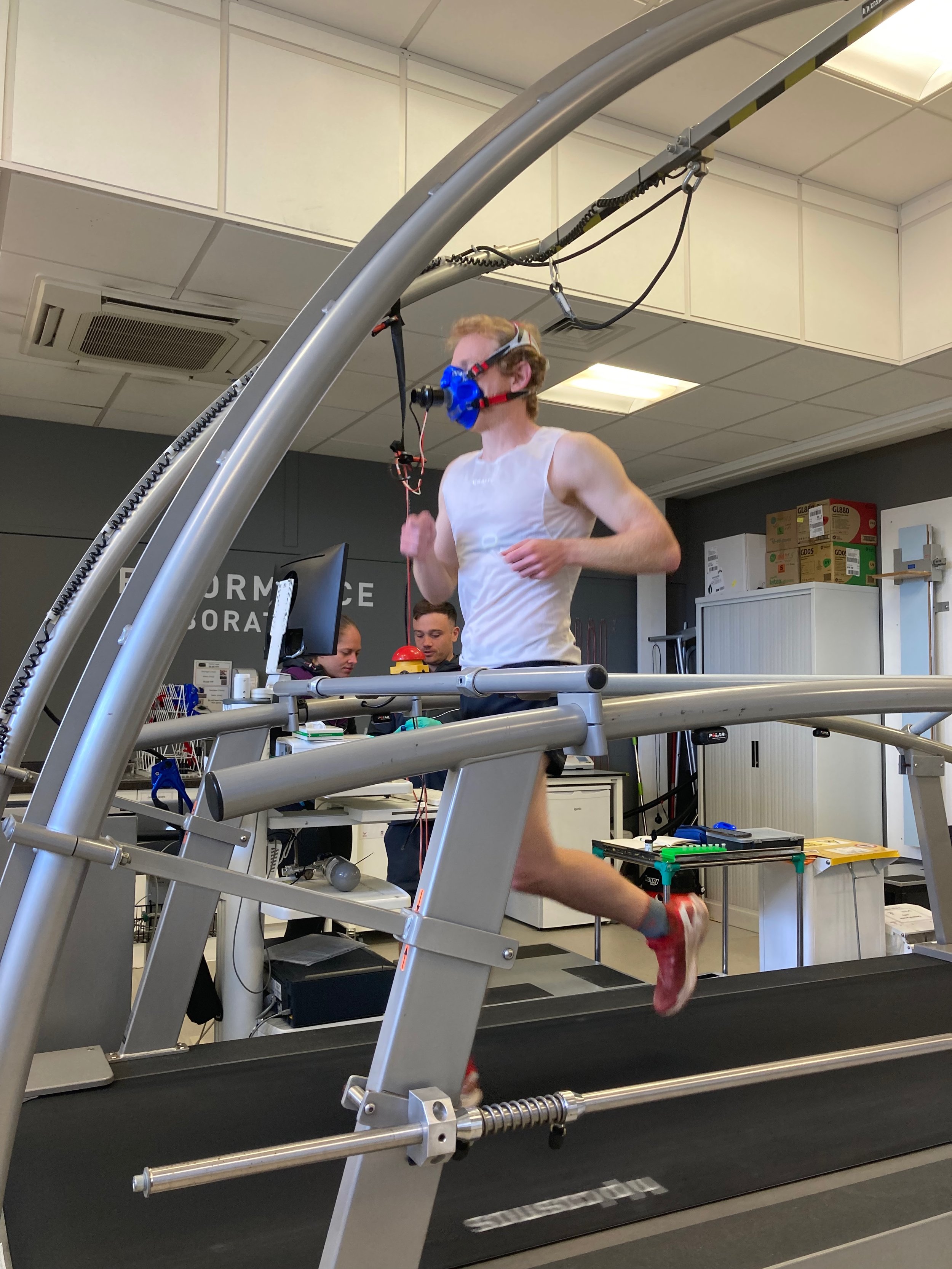Comparing test procedures and devices for Runners
by Doug Stewart
Part of the reason I was keen to do a PhD at Loughborough University is that it has been ranked the top University in the World for sports related subjects for the past 7 years. This is in part due to the size of the School of Sport, Exercise and Health Sciences, and the expertise that exists within the school. This presents lots of opportunities for networking and also for participating in research.
Doing running physiology testing at the Loughborough University Performance Lab
Over the past 7 months, I have volunteered for several studies, from exploring the impact of fatigue on running economy to beetroot juice supplementation and muscle biopsies.
After all the testing, there are some interesting observations.
Vo2Max Tests
I have completed 7 of these tests (6 running and 1 cycling). What has become evident is that, for me, the score varies massively based on when the test is completed. This means that, when done first thing, my Vo2Max score is a lot higher than when done after 1 hour, 1.5 hour or 2 hours of running prior to the test itself. This may sound obvious, but it is worth considering that a Vo2Max score varies. Also, the score my Garmin gives is roughly in line with the score I achieved after a 90-minute run at a moderate intensity. So, for me, and this will vary for everyone, that particular score is not reflective of a fresh state Vo2Max.
Body Composition
One study I volunteered for involved body composition monitoring with 3 different approaches:
An electronic medical body composition analyser that costs close to £8,000
A Body Pod system
Skin fold callipers
Despite the first two tests being industry leading and medical grade, the results were still different between them, while the skin fold callipers gave a 3rd number for body fat percentage. My body composition scales at home gave me yet another number, which was fairly close to the calculation from the Body Pod. Therefore, if you have a body composition scale at home, it’s the trend for elements such as body fat % that is likely more valuable than any specific measurement. The weights recorded were all very close across all scales/devices.
Blood Lactate
Another test I did involved recording blood lactate while my running speed increased every 6 minutes. There were two devices used to capture the blood lactate data: a lab-based system that again is industry leading and a small portable handheld device. The handheld device was consistently reading lower than the lab-based system. Whilst the test I was completing was aiming to determine a lactate profile for me, if using standard markers of the first and second threshold of 2mmol/l and 4mmol/l (numbers frequently used to describe these thresholds, although not the best approach), the handheld device would likely be under recording – thus meaning that the threshold speed and threshold heart rate would be set too high.
Overall, I think the testing has shown very clearly that, whilst we use a lot of devices to assess our training, guide intensities, and generate training stress scores, it is worth considering their accuracy. Whilst many devices do have a margin of error, how often do we reflect on this rather than focus on the absolute numbers being produced?
If comparing data, then it is best to always use the same device and measurement method. For example, if recording resting heart rate and HRV: ensure that you are always doing it at the same time of day, under the same conditions, and using the same device. Another example may be if you have a turbo trainer that records power, as well as a power meter on a bike you use outdoors. Comparing cycling power across the two devices is likely to show differences (an easy test is to ride with the power meter indoors and record that on one device and log the turbo trainer on another - you could then compare the two files to see variances). Ultimately, comparing different devices or different approaches to recording the data is unlikely to provide reliable information and can lead to false conclusions.

